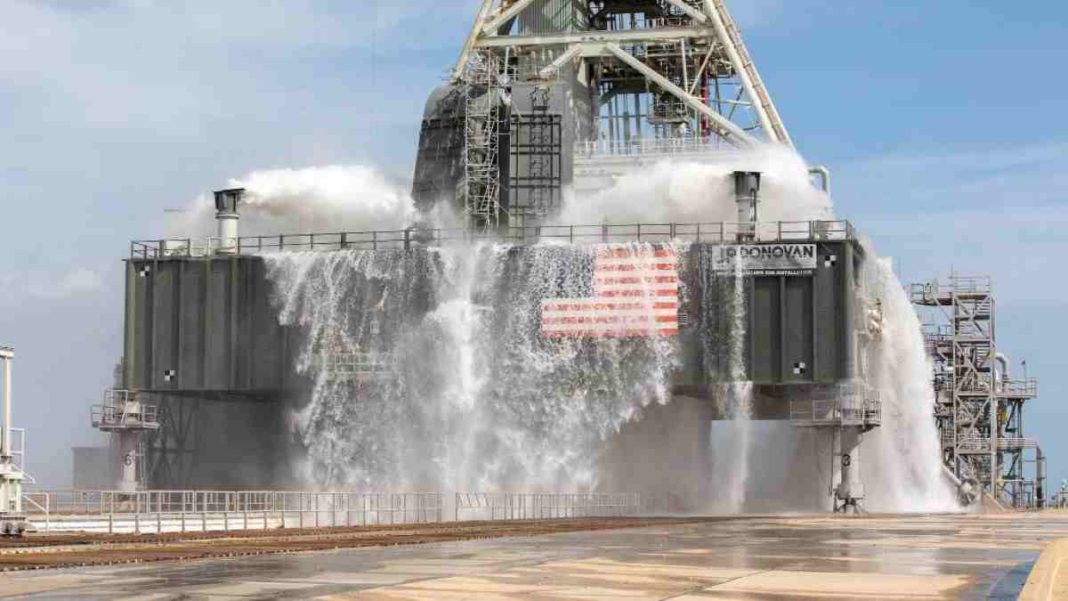UNITED STATES: As we witness the awe-inspiring sight of a NASA rocket soaring into space, it’s hard to imagine that water plays a crucial role in the success of these monumental missions.
Behind the scenes, NASA utilizes a significant amount of water during space launches, and the reasons behind this may surprise you.
Water’s primary function during a launch is to protect the rocket and its precious cargo. The process begins with the ignition of the engines.
As the enormous thrust generated by the rocket’s engines pushes it off the launch pad, a torrential downpour of water is released, creating a giant cloud around the rocket.
This phenomenon, known as the water deluge system, serves multiple critical purposes.
Firstly, the water mitigates the intense acoustic energy produced during liftoff. The roaring sound waves generated by the engines can exert tremendous force on the rocket, potentially causing damage.
The sound energy is dampened by releasing copious amounts of water, protecting the vehicle from destructive vibrations.
Secondly, the water deluge system acts as a thermal barrier. When the engines ignite, they produce enormous heat, potentially damaging the launch pad and the rocket.
The cascading water absorbs and dissipates this heat, preventing any harm to the infrastructure and ensuring a safe liftoff.
Additionally, the water cloud serves as a shield against the launch pad’s flames and exhaust gases.
As the rocket ascends, it leaves behind a fiery plume and a trail of exhaust gases. The water cloud acts as a barrier, preventing the reflected heat and debris from harming the rocket and its sensitive components.
This protection is vital during the critical early stages of the launch, when the rocket is closest to the ground.
Moreover, the water deluge system plays a crucial role in suppressing fires. In an emergency, such as an engine failure or a potential explosion, the water cloud can quickly extinguish flames, minimising the risk to the crew, the rocket, and the surrounding infrastructure.
Beyond the water deluge system, NASA also uses water for other essential purposes during space launches.
The sound suppression system, for instance, utilizes a pool of water beneath the launch pad. When the engines ignite, the immense heat turns the water into steam, which helps further dampen the acoustic energy.
Furthermore, NASA uses water for cooling purposes. Rockets generate enormous heat during liftoff, and specific components, such as the launch pad structure and fuel lines, need to be cooled to prevent damage.
Water is circulated through these systems to dissipate the heat, ensuring the integrity of the infrastructure and the rocket itself.
NASA’s water use during space launches exemplifies the meticulous planning and engineering required for successful missions.
From protecting against acoustic vibrations and heat to suppressing fires and shielding against exhaust gases, water is vital to ensuring safe and successful liftoffs.
Next time you witness a NASA launch and the theatrical release of water, remember its critical role behind the scenes. It’s an ingenious strategy that showcases NASA’s dedication to innovation and safety as they push the boundaries of space exploration.



